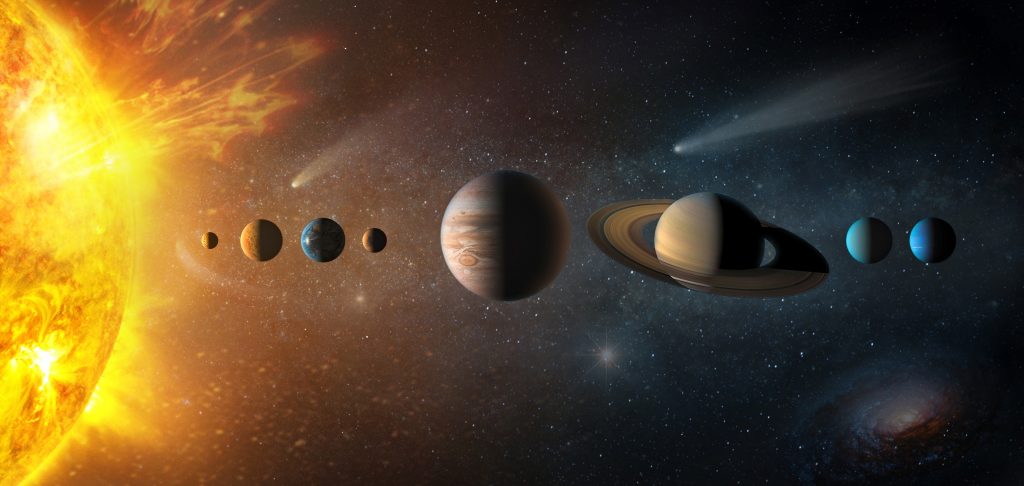
© Shutterstock
Zafar Bhatti, Warwick, UK
In the first part of this series, the author discussed the earliest theories of how the cosmos operated. He explained why geocentricity prevailed as our main explanation of the heavens, and why the uniformity of the night sky was thwarted by five ‘wandering stars’ as they called them, or ‘planetes’. These five ‘stars’ moved across the night sky in an odd way, causing Ptolemy to propose his solution. In this part, we discuss Islamic astronomy, and how Muslims revived science as they knew it.
Following Ptolemy there was a long period of darkness in the field of astronomy. It was as if time stood still. In fact, the field went backwards. We even see that ‘Indicopleustes (c. 550 CE) proposed a flat Earth theory’ during this period of time. This lasted for approximately five hundred years after Ptolemy, until an unlettered Arab named Muhammad (sa) stood alone in the deserts of Arabia and enlightened the entire world.
What happens next is a staggering acceleration in the pace of learning. Even if we restrict ourselves to advances in astronomy, we can see that Muhammad (sa) ignited the lamp of learning with a blessed lamp bestowed on him by God Almighty, in the form of the Holy Qur’an.
The Holy Qur’an is a book in which one eighth of all its verses exhort Muslim to reflect, with many verses instructing Muslims to specifically ponder over the heavens and earth:
‘In the creation of the heavens and the earth and in the alternation of the night and the day there are indeed Signs for men of understanding; Those who remember Allah while standing, sitting, and lying on their sides, and ponder over the creation of the heavens and the earth.’ [2]
The Holy Prophet (sa) would continuously exhort his followers regarding the importance of acquiring knowledge. In one instance, he stated that ‘the seeking of knowledge is obligatory for every Muslim.’[3]
History testifies to the fact that the age ushered in by the Prophet Muhammad (sa), an unlettered Arab, was unprecedented in the history of humanity. It brought about a huge movement, crossing countries and continents for the gathering, harnessing and researching of knowledge. Even if one discounts all other contributions by the Muslims, then this movement towards the pursuit of knowledge was still the precursor and antecedent of the Scientific Revolution. The Scientific Revolution was, in fact, a direct result of this step-change in human societal evolution, in which the pursuit of knowledge became the epitome of human endeavour.
The Islamic civilisation began a movement which sought to gather the world’s knowledge. It would not be the discovery by Copernicus that the Earth goes around the Sun that resulted in the Scientific Revolution, rather the realisation and indoctrination that humanity’s progress circles the light of knowledge. Without knowledge, darkness covers the earth; with knowledge, humanity attains enlightenment. With this philosophy, the Scientific Revolution was no longer a matter of if but when, and it is this philosophy that took root in Europe, as the light of curiosity and reason waned in the Islamic world. Once Muhammad (sa) lit the torch of knowledge for humanity, it would never be extinguished; rather, it would be passed on from one civilisation to the next.
The Regeneration of Greek Science
The beginnings of the Islamic renaissance of science are usually described as a mere translation movement of Ancient Greek texts into Arabic, beginning in the Abbasid Caliphate (~750-1258 AC). [4] To call this period one of mere translation is to trivialise the epic scale of the task, and the complexity in its nature. To source, transport and then translate hundreds of texts which covered the scientific and philosophical works of the Greek and Sassanian civilisations is a task which in itself is worthy of great praise and appreciation; a task which, before that time, did not have any parallel in human history and cannot possibly be underestimated or trivialised.
However, there is something even greater that needs to be appreciated. It must be understood that in the realms of science, for a successful translation of a book to be made, there must be a similar level of mathematical and scientific understanding between the original author and the translator. We know that translation is a difficult art at the best of times, but to translate scientific or technical texts has an additional complexity, because they require both an understanding of the text to be able to make the translation and the existence of matching technical terms in the language being translated into.
At the same time, we know that for centuries, Greek science had disappeared from the face of the earth. So how could a receiving civilisation understand these mathematical and scientific texts? Who was around at the time to teach the Islamic civilisation what these texts meant? One of the foremost researchers regarding the history of Islamic Science, George Saliba, picks up on this point, writing:
‘When books were not taught or used in wide circulation, how could contact (i.e. contact between Islamic and other “more ancient civilisations”) have produced any positive and effective transfer? The classical narrative has no convincing answer to such a straightforward question.’ [5]
It was necessary not just for a translation of the scientific works but a regeneration of Greek science; where scientific proofs are re-derived and reformulated, where measurements are recalculated, observations are redone, and where the math is recalculated and once again re-understood. The entire building blocks of a civilisation were being recreated and this is exactly how we find the early Islamic scientific movement progressing: it was commenting, analysing, correcting and critiquing the works, not just merely translating.
We can understand this in the modern context by considering Einstein’s theory of General Relativity: imagine if science came to an end tomorrow, and a period of scientific ignorance lasted for the next five centuries. If after this time, a civilisation was born which began an attempt to reformulate scientific thought, and they came across a paper on Einstein’s General theory of relativity, how would they understand that paper? To understand it would take the resurrection of all the mathematical and scientific methodology from the 17th – 20th century. As such, I believe that the translation movement of the Arabs was not simply a translation but a re-creation of Greek science, and this movement occurred primarily during the first two to three centuries of Islam.
Recognising this, it is truly astounding that within 200 years of the Holy Prophet Muhammad’s (sa) demise, we find the oldest surviving translation of Ptolemy’s Almagest into Arabic completed by the scholar al-Hajjaj bin Yusuf (829 AC) in the time of the Caliph Al-Ma’mun.[6] It is amazing that within 200 years, the Muslims had not only developed an understanding of Greek Astronomy, but had developed technical terms to match, and then further developed their astronomy to a level where they were correcting Ptolemy’s mistakes.
Advances in Astronomy
The classical narrative of Islamic Science would have us believe that the translation movement is where science in Islam begins and ends, however, this view is naive and displays elements of prejudice at its heart, for the following reasons:
Firstly, as previously pointed out, there is nothing trivial about the scale of the classically acknowledged translation movement.
Secondly, one should not refer to the beginnings of Islamic Science as the Translation Movement, but rather as the ‘Regeneration of Greek Science’.
Thirdly, in terms of Islamic astronomy (which is the focal point of this article), we find clear evidence of progression on the Ptolemaic texts. We will now present how Ptolemaic astronomy was advanced and challenged by Islamic science, specifically covering the following domains:
i. The correction of fundamental astronomical values.
ii. The challenging of the Cosmological Model presented by Ptolemy, calling for a new model – known as the Doubts (Shukuk) Movement.
iii. The correction of cosmological anomalies in Ptolemy’s model, leading Islamic Astronomers of the West to finally resolve the first Ptolemaic anomaly of the ‘wandering stars’.
Correction of Values [7]
Axial precession
As the Earth rotates, it wobbles slightly. This wobble is termed the axial precession of the Earth, i.e. the gradual shift in the orientation of the Earth. This means that when the Earth rotates around its axis, the axis itself rotates. As the Earth was believed to be still, this motion was ascribed to the Sun and known as the Solar precession. Ptolemy calculated this precession change to be 1 degree every 100 years; however, by the mid-9th century, the Muslims had calculated it to be 1 degree after every 66 years or a change of 51 seconds per year. The current calculated value is 50 seconds per year, an astonishing degree of accuracy! As Saliba writes:
‘Who trained those astronomers to conduct such refined observations…that have obviously withstood the test of time as we still find them in current use today?’ [8]
This correction to the precession value occurred within 200 years of the passing away of the Prophet Muhammad (sa), a fascinating testament to the intellectual surge caused by Islam.
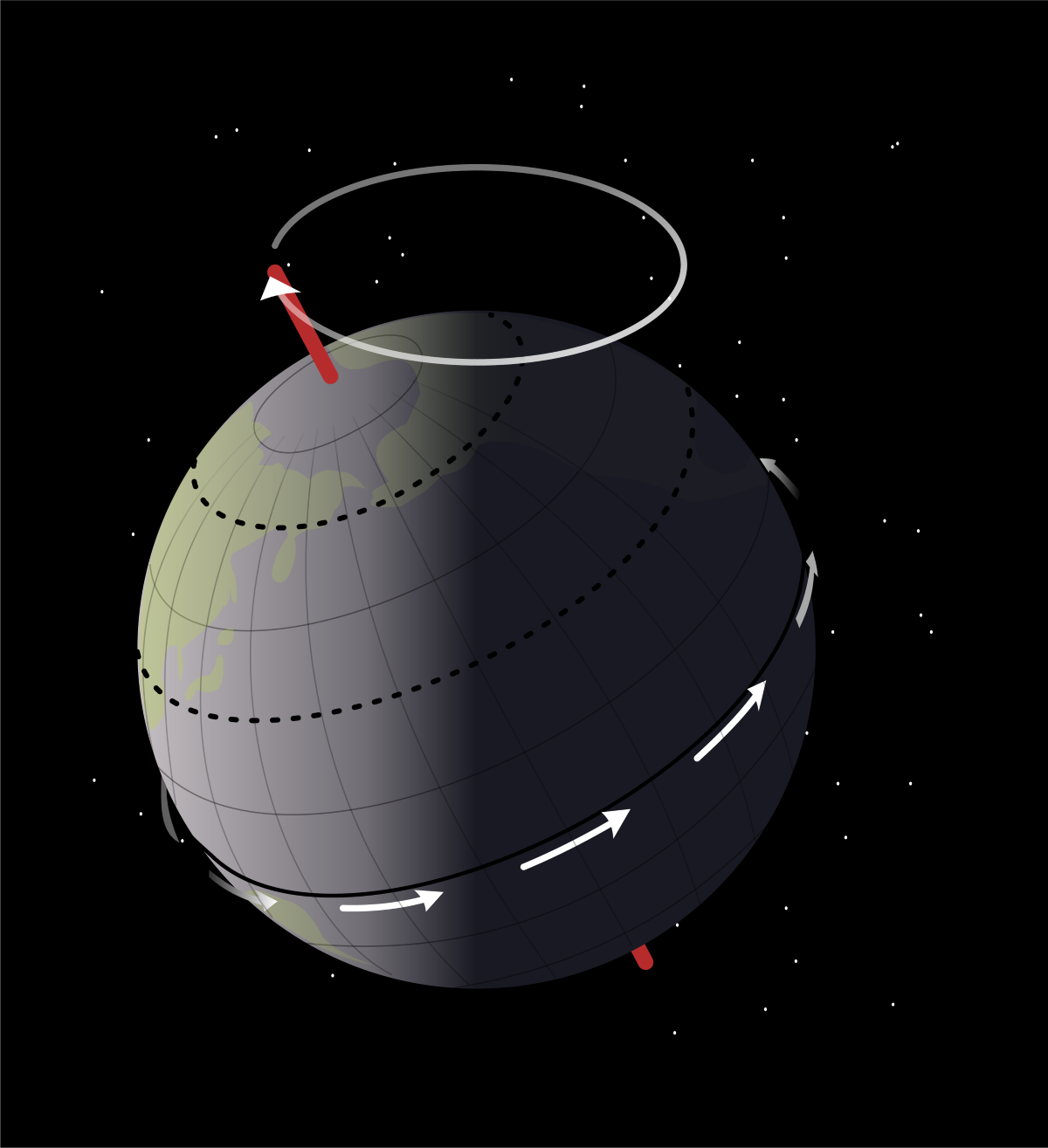
Image credit: Wikimedia Commons | NASA, Mysid
Figure 1- Precession of Earth’s rotational axis is caused by the tidal force exerted on Earth by the gravity of the Moon and Sun.
Inclination of the Ecliptic
Relative to the earth, the ecliptic is an imaginary line on the celestial sphere that maps out the path the sun would take around the Earth throughout the year. The ‘Inclination of the Ecliptic’ is the angle the rotational axis of the Earth makes with the ecliptic.
Ptolemy had calculated this to be 23 degrees 51 minutes and 20 seconds. The Muslims in the early 9th century, again less than 200 years after the Prophet Muhammad (sa), calculated this to be 23 degrees and 33 seconds. This is also ‘a value that is still in use today’. [9] Throughout human history no civilisation had achieved such astonishing degrees of accuracy in the measurement of the heavens.
Solar Apogee
The Solar apogee is the point at which the Sun is furthest from the Earth. Ptolemy and the Greeks thought that this was fixed, however very early on, the Arabs measured this as a varying value and closely linked it to the precessional motion of the fixed stars. [10] In my own view, this could have been a key finding in moving to a Heliocentric system, although I have found no historical evidence that this was the case. I present two possible avenues for further investigation.
Firstly: for the Greeks, the solar apogee (distance between the earth and Sun) must (by definition) show no variation, as according to Aristotelian cosmology, the movement of the heavenly bodies is due to the movement of heavenly spheres, not the objects themselves. Thus, these bodies should have uniform dimension. Therefore, variation in the point at which the Sun is furthest from the Earth should not exist.
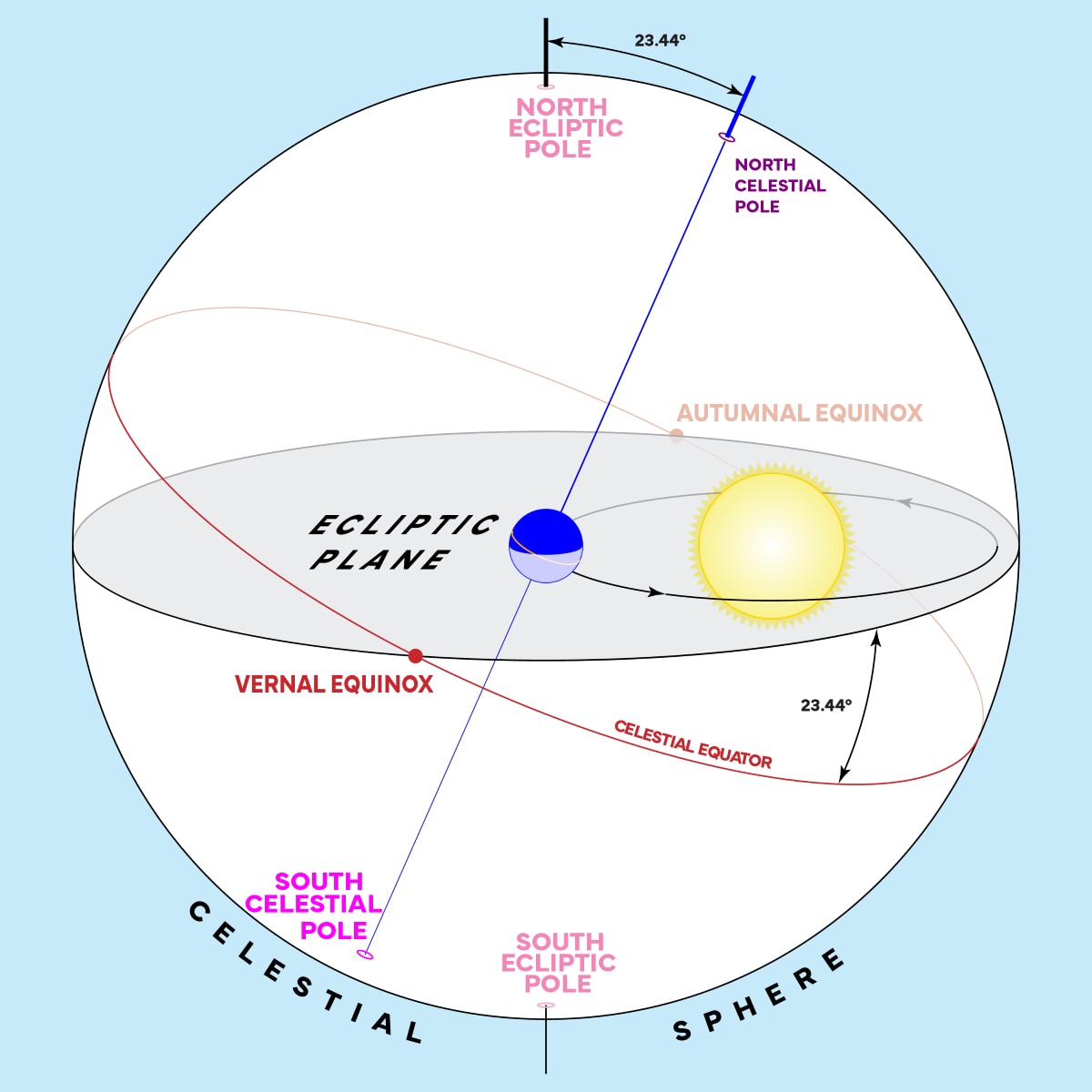
Image credit: Wikimedia Commons | CielProfond. CC BY-SA 3.0
Figure 2- Inclination of the ecliptic; Diagram of Earth’s orbit, showing ecliptic plane and the celestial equator on the celestial sphere.
Secondly, this observation ties the motion of the Sun to the motion of the stars. As it was understood at the time that the stars and the sun were in physically different and distinct locations on different spheres, it would be unlikely that the rotational speed of different spheres matched. If the motion was found to match then one should be able to conclude that it is the earth that is in motion, and not the Sun.
Observational Tables
During this period, the observations of the heavens reached an unprecedented level of accuracy, culminating in the Book of Astronomical Tables (Al-Zij) of Al-Battani in the early 9th Century. These tables contained all the data needed to plot the positions of the sun, moon and planets and would be used for a number of centuries. Even in this very early period of Muslim civilisation, we find a challenge to the observational methods used by Ptolemy called the Fusul method. We see that at this time, when the methods and measurements differed from Ptolemy’s methods, it led to more accurate results. More can be read about the Fusul method in George Saliba’s work on this subject. [11]
Development of Mathematics
In terms of astronomy, we see that by the middle of the 9th century, Habash al-Hasib in his treatise The Damascene Zij (al-Zij al-Dimashqi) introduced the trigonometric functions of cosine, sine and tangent, which astonishingly simplified astronomical calculations.[12]
In part III, we discuss the Doubts Movement, which shook Ptolemaic astronomy to its core and forced future astronomers to critically analyse and reimagine the heavens. While Muslims like Al–Biruni challenged Aristotle’s suppositions, the Maragha astronomers in India created new mathematical principles to make sense of the universe. How did they unravel the mysteries of the heavens, and what contribution did this bestow upon our cosmic map?
About the Author: Zafar Bhatti earned a Master’s degree in Physics from Imperial College London and has since gone on to build a career in the IT industry.
ENDNOTES
1. George Saliba, Islamic Science and the Making of the European Renaissance (Cambridge, Massachusetts; London, England The Mit Press, 2011), 6.
2. The Holy Qur’an, 3:191-192
3. Sunan Ibn Majah, Hadith 224.
4. George Saliba, Islamic Science and the Making of the European Renaissance (Cambridge, Massachusetts; London, England The Mit Press, 2011), 2.
5. Ibid., p. 5.
6. Ibid., p. 17.
7. Ibid., p. 81.
8. Ibid.
9. Ibid.
10. John L Esposito, The Oxford History of Islam (New York, N.Y.: Oxford University Press, 1999), 164.
11. George Saliba, Islamic Science and the Making of the European Renaissance (Cambridge, Massachusetts; London, England The Mit Press, 2011), 82.
12. John L Esposito, The Oxford History of Islam (New York, N.Y.: Oxford University Press, 1999), 165.

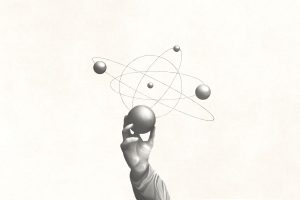

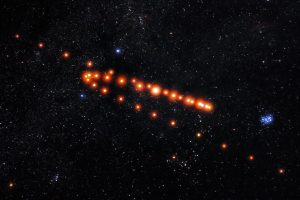
Add Comment